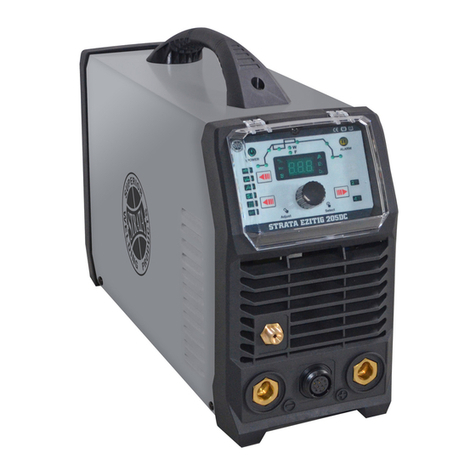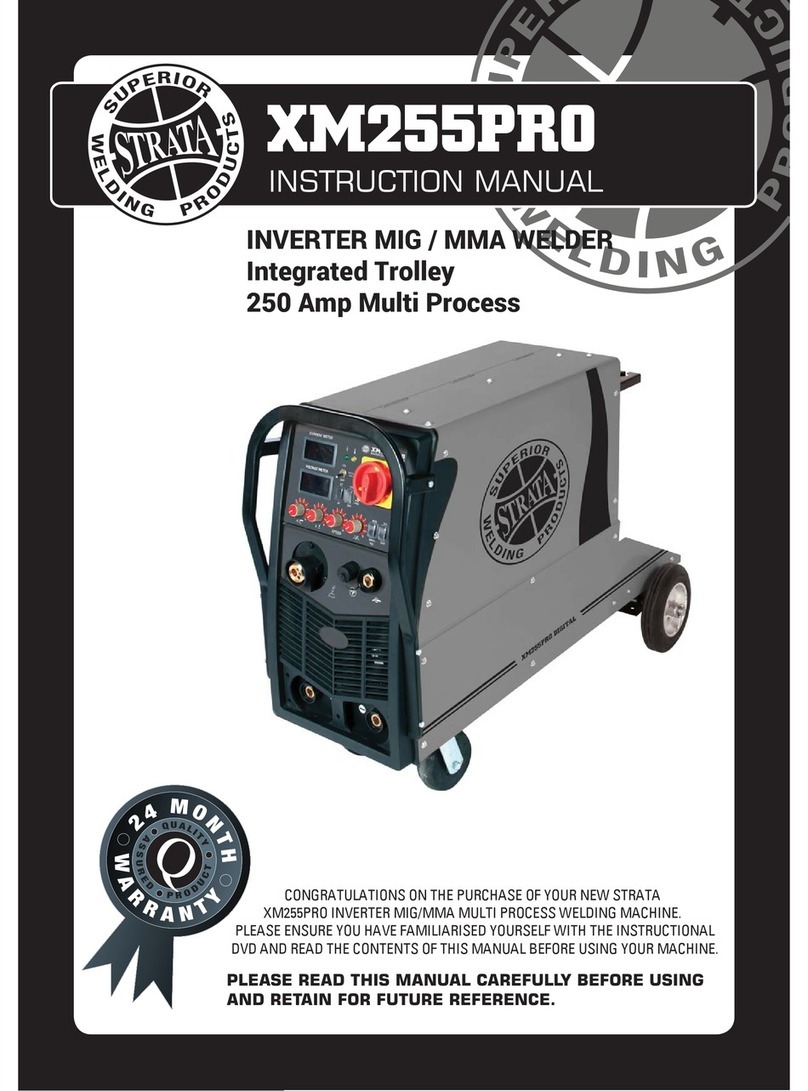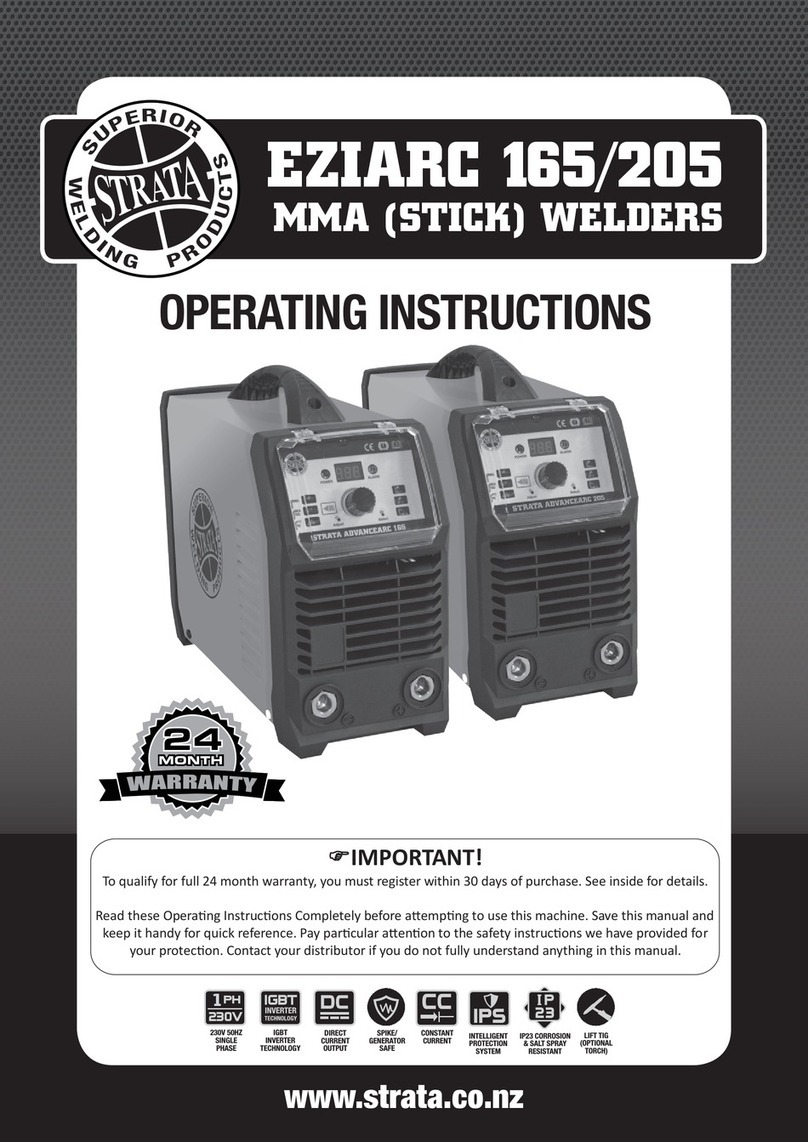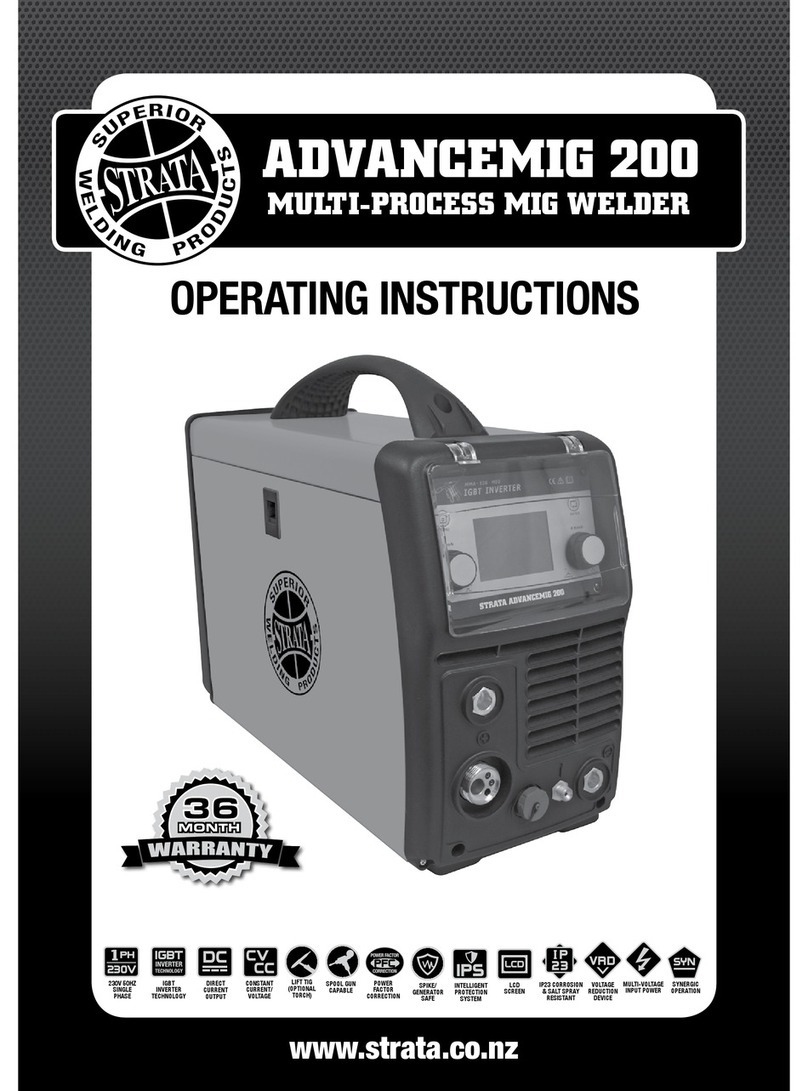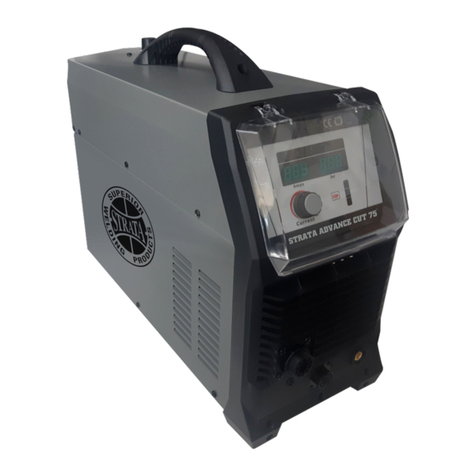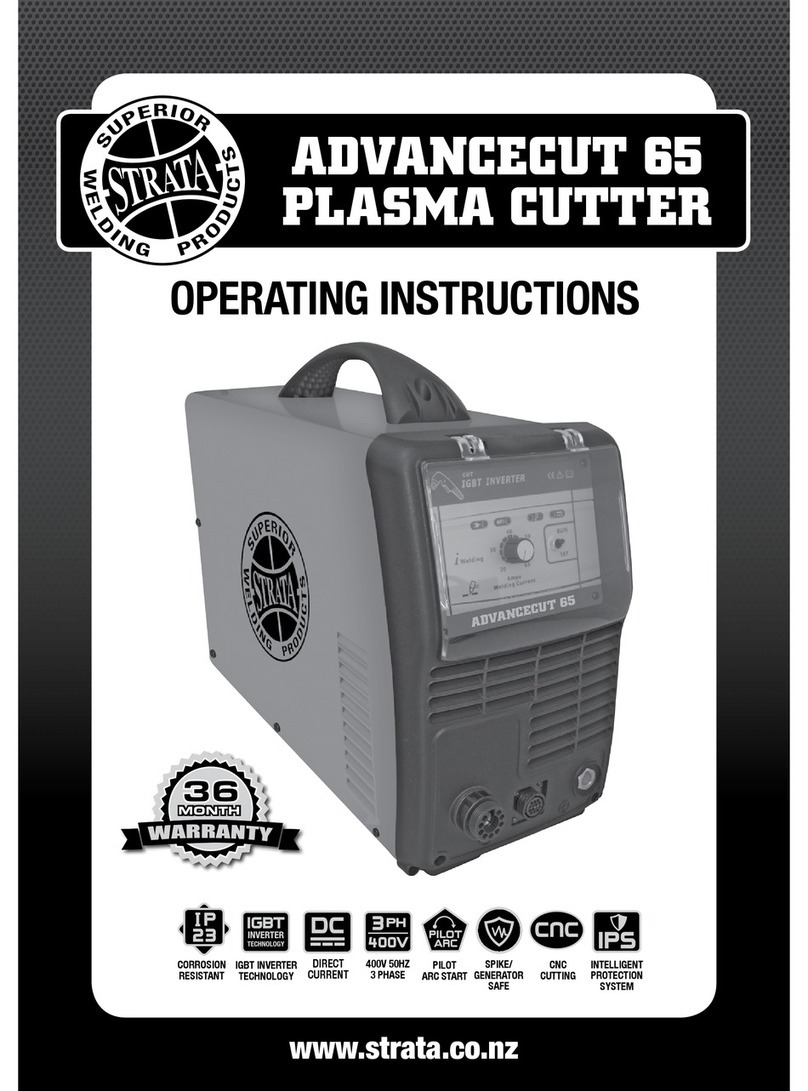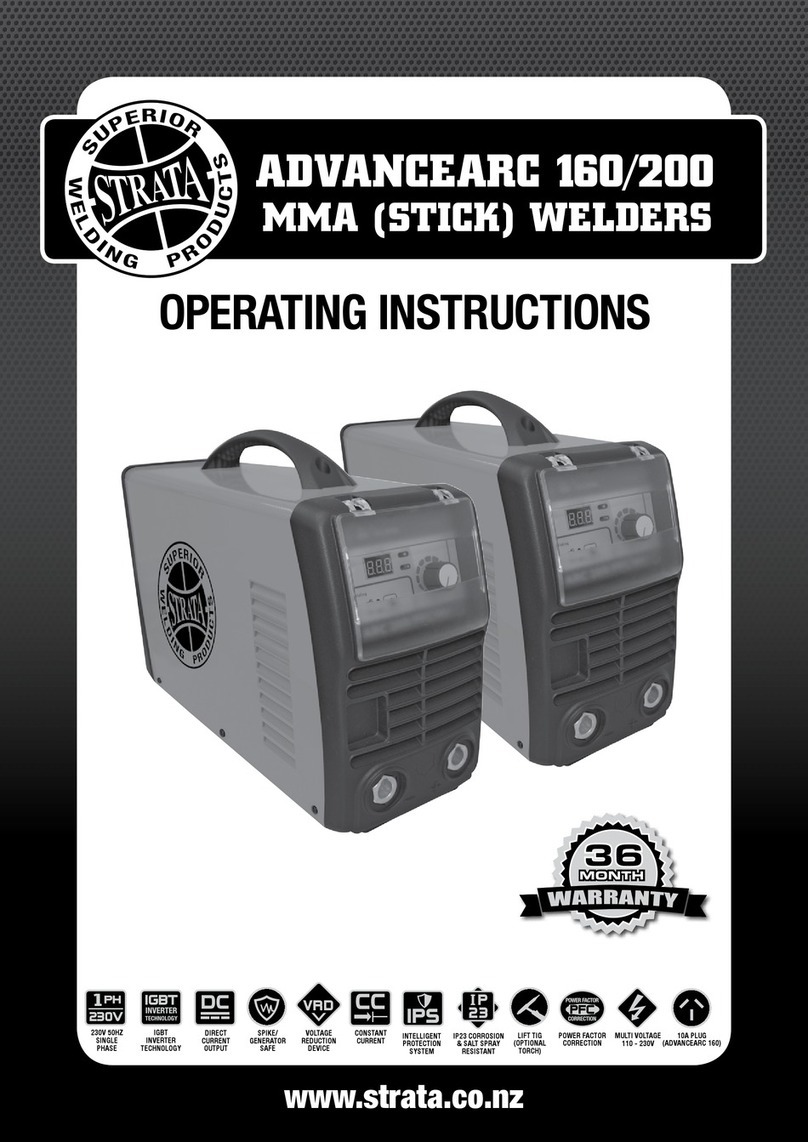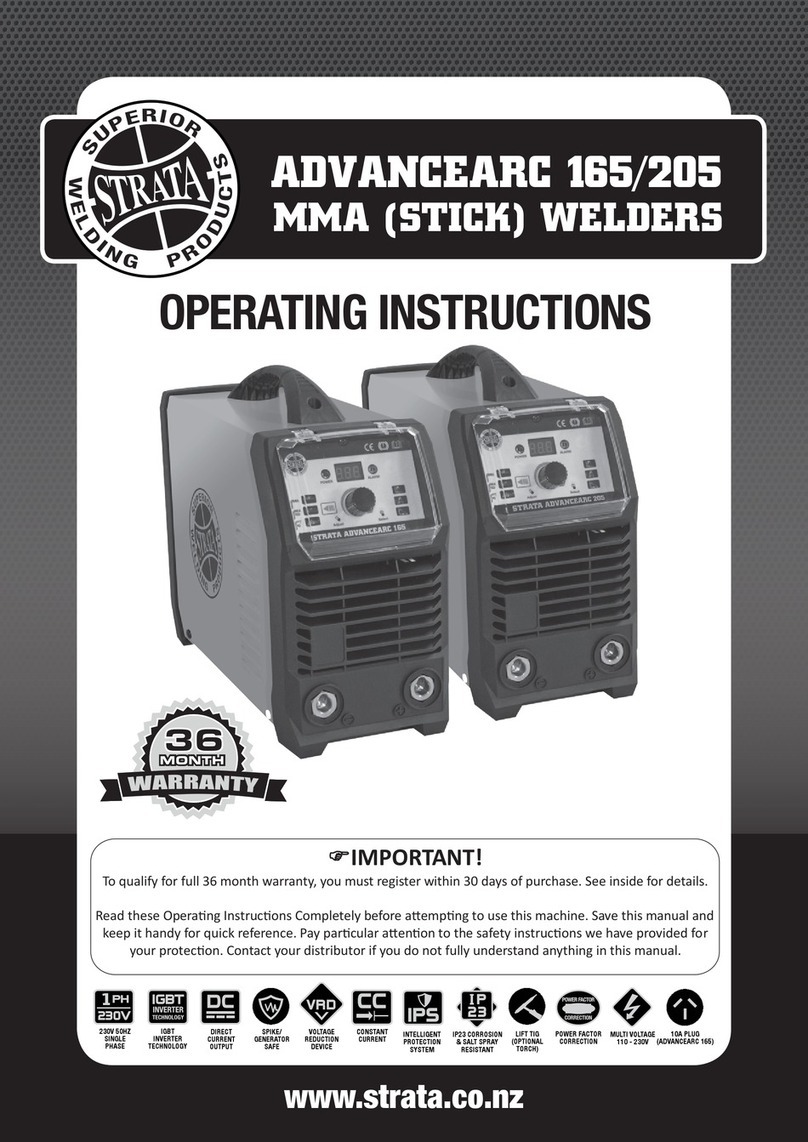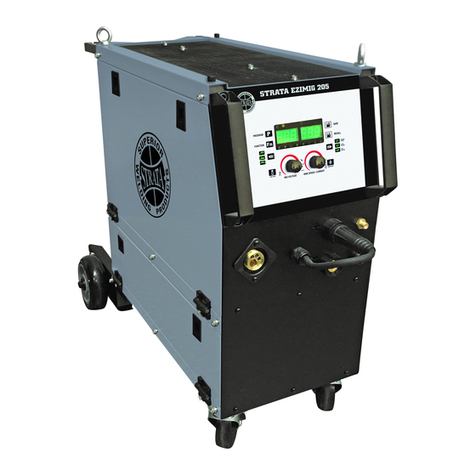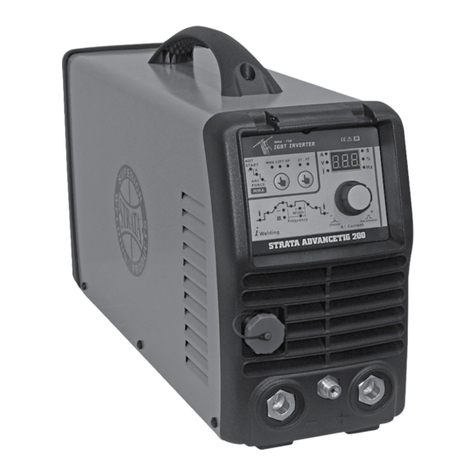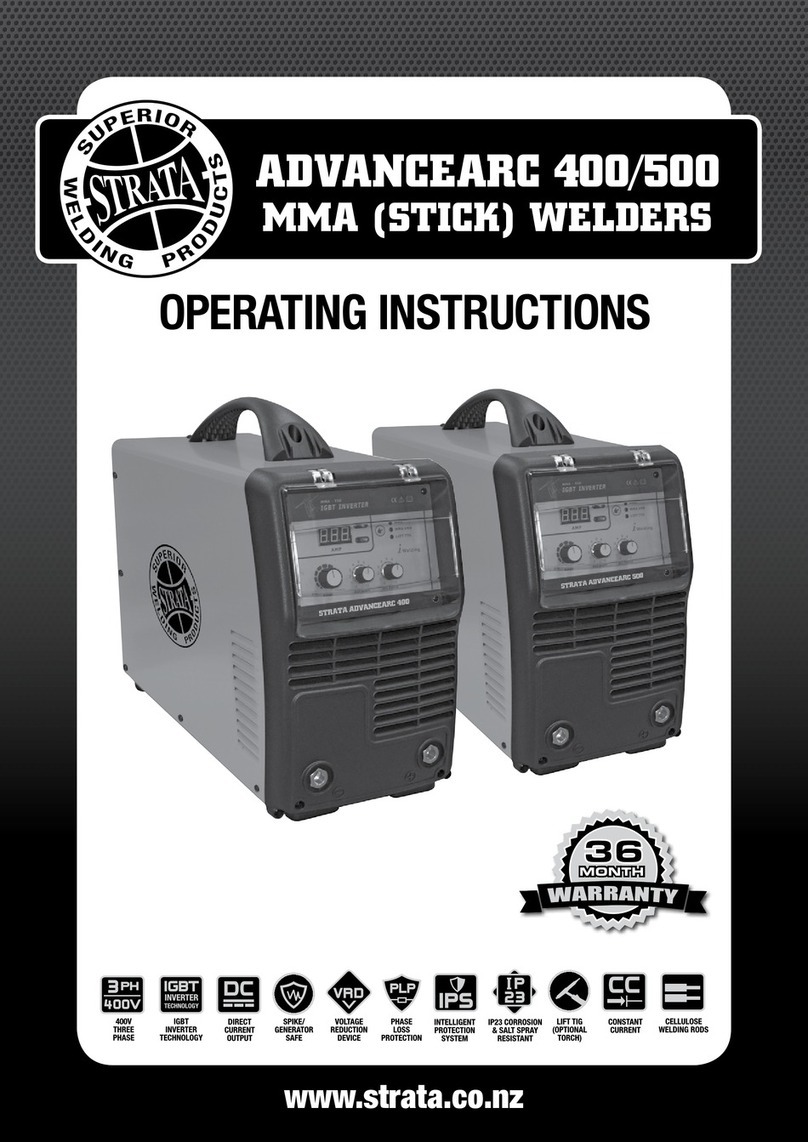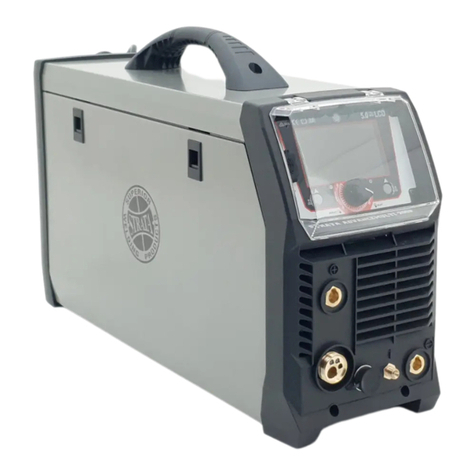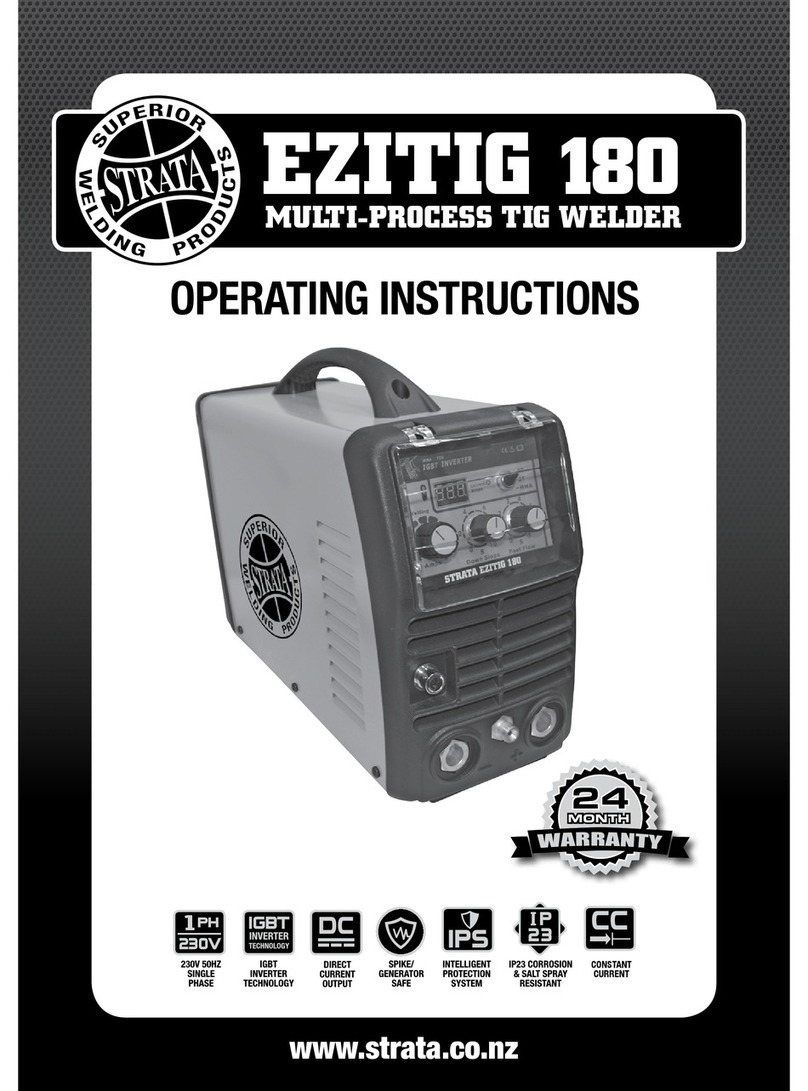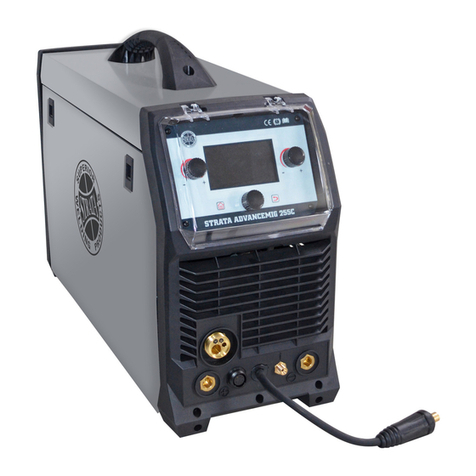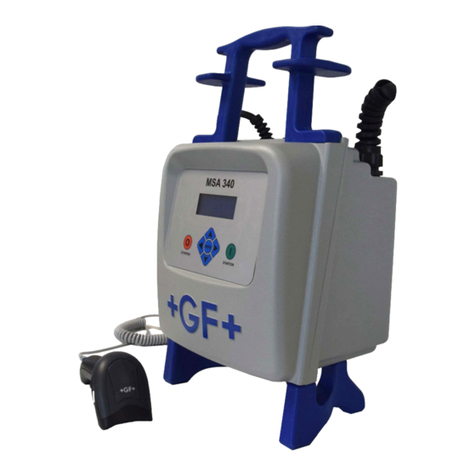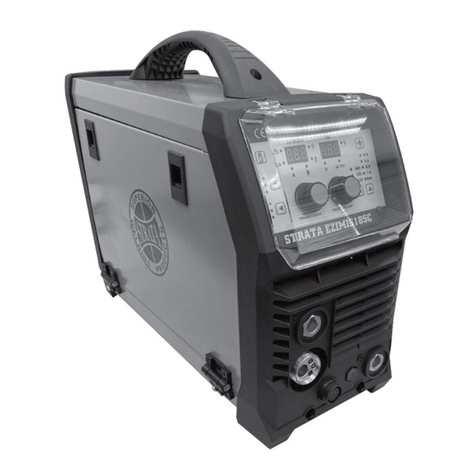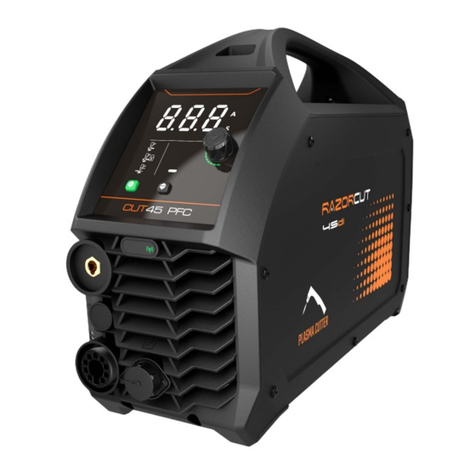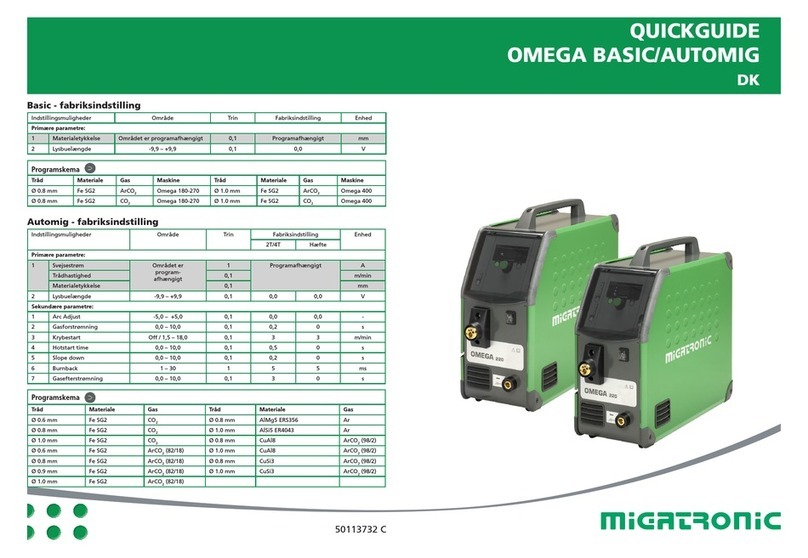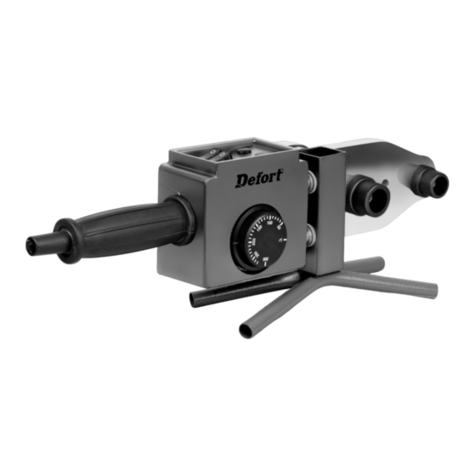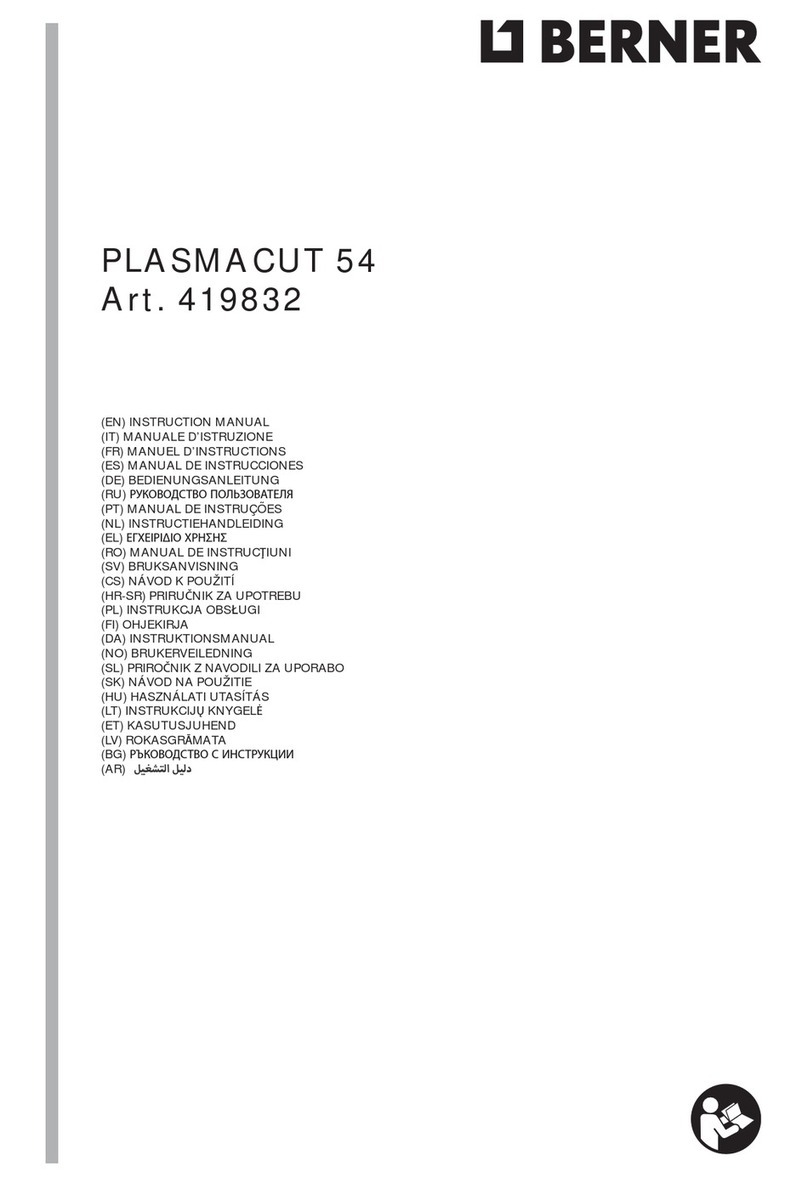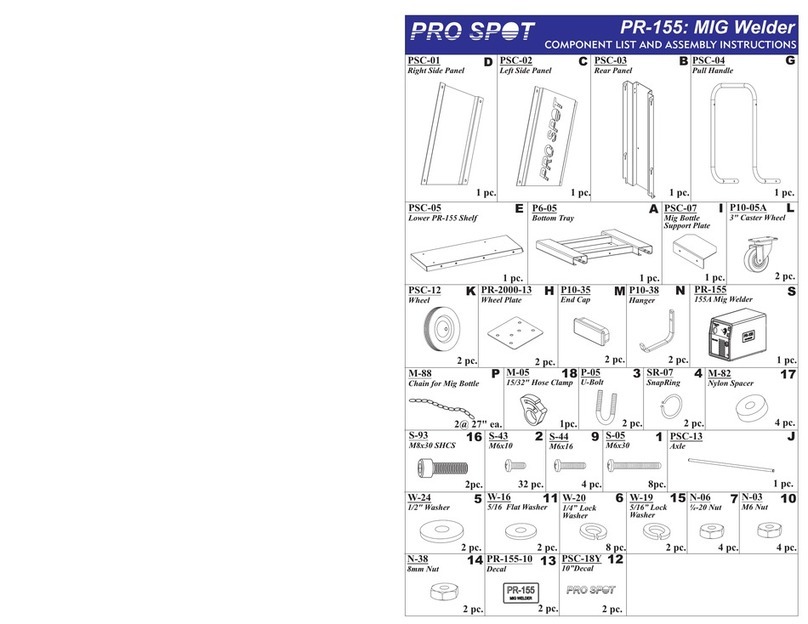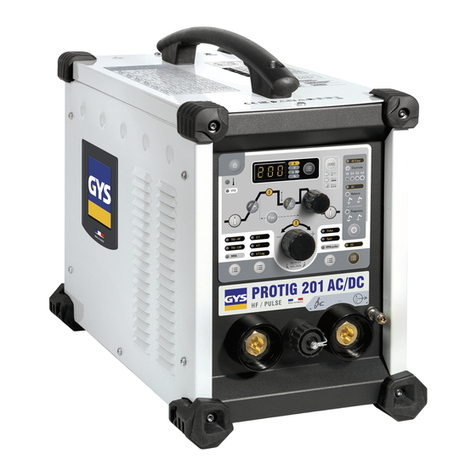8www.strata.co.nz
ADVANCETIG 200AC/DC
Repeat Mode (26)
Cycles between peak (14) and base (15) welding
current set, each time the trigger is activated. Also
uses upslope (13) and down slope (17) when chang-
ing between the peak and base current settings. The
number of cycles repeated before the arc stops is set
ontheLHdisplay(5)whentherepeatmodeindicator
(26)islit.
AC/DC Output Modes
DC (Direct Current) Welding Output (28)
Suitable for TIG welding ferrous (iron based) met-
als such as mild steel and stainless steel, copper
and titanium. TIG welding reactive metals such as
Aluminium, Magnesium and Zinc requires AC (al-
ternating current) output. When reactive metals are
exposed to air they form an oxide layer that insulates
the base metal and prevents welding current flowing,
italsocontaminatestheweldpool.Reversecurrent
flowisrequiredtobreakthrough/cleanoffthisoxide
layer so that welding can take place, while the current
flow during the positive cycle does the majority of the
heating of the weld pool area.
AC Triangle Wave Welding Output (29)
Reducedheatinputforsamecurrentsetting.Espe-
cially useful for welding thin metal.
AC Sine Wave Welding Output (30)
TraditionalACTIGweldingwaveform.Quieter,‘soft’
arc characteristic.
AC Square Wave (31)
Focused arc for maximum penetration, fast travel
speed with best directional control.
TIG Arc Starting Modes
TIG HF/ Lift ignition modes (32/33)
ForTIGweldingprocess,contactofthetorchtung-
sten to the workpiece will cause contamination of the
tungsten and the workpiece that will adversely affect
the weld quality, especially when the tungsten is elec-
tricallyenergised.HF(highfrequency)ignitionsends
a pulse of high energy electricity through the torch
system that is capable of ‘jumping’ between the tung-
sten and the workpiece, ensuring arc starting without
any contact between the tungsten and workpiece.
ThedisadvantageofHFignitionisthatthehighen-
ergy electrical pulse creates significant electrical and
radio signal interference, which limits its use around
sensitive electronic equipment such as computers.
Lift TIG ignition is a compromise that minimises
tungsten contamination while eliminating the electri-
calinterferenceofHFstartsystems.
Liftarcstartingworksbylightlyrestingthetungsten
on the work piece, activating the torch trigger signal
and then lifting the tungsten off. The control circuit
will sense when the tungsten is removed from the
work piece and send a low powered pulse of electric-
itythroughthetungstenthatwillcausetheTIGarcto
initiate.Becausethetungstenisnot‘live’whenitisin
contact with the work, contamination is minimised.
Program/Job Memory
The AdvanceTig 200 AC/DC has 10 memory/ job
spaces that parameters can be saved to for easy re-
call. To access a saved program, press the control
knob(7)andtheprogramnumber0-9willshowon
the display. Adjust to the program number required
by rotating the control knob. Once the program is ac-
cessed, it will automatically load. To return to normal
parameter settings, move the control knob up, down,
right or left. To save parameters set as a program,
press and hold the control knob for a few seconds
and the display will blink. The settings are now saved
inthelastprogramspacethatwasselected.Ifset-
ting parameters to save as a program, ensure that
you start with a program number that the data is OK
to overwrite, as the previous settings saved to that
memory space will be lost.
